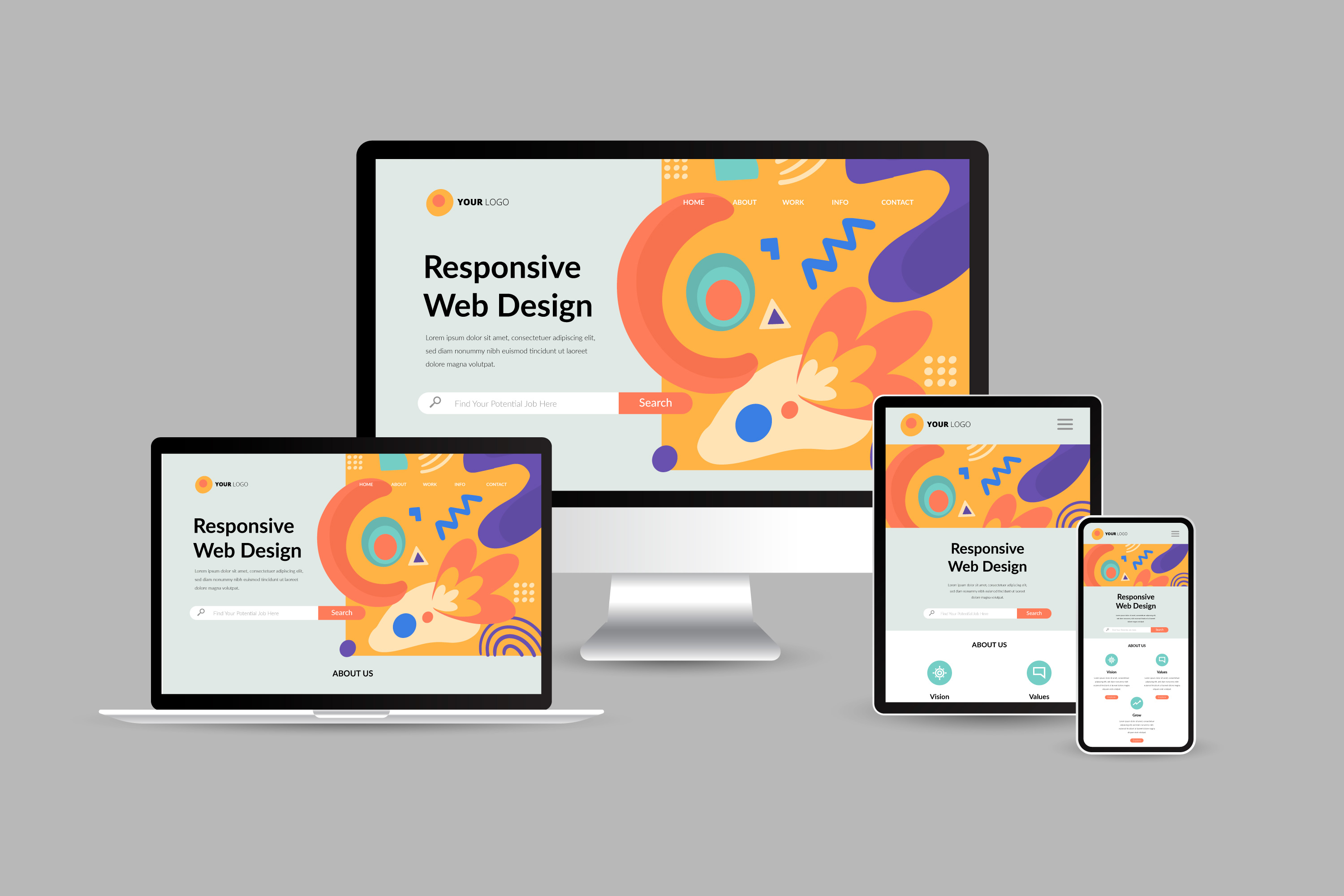Achieve Online Success With User-Friendly Internet Site Design
In the significantly competitive digital landscape, the style of a website can be a critical factor in determining a service's success. Straightforward style not just enhances the overall customer experience but also influences essential metrics such as retention, involvement, and conversion rates.
Significance of Individual Experience
User experience (UX) plays a critical function in the success of a site, as it directly influences user complete satisfaction and engagement. A favorable UX makes certain that site visitors can navigate the website easily, gain access to information promptly, and complete desired activities, such as making an acquisition or signing up for an e-newsletter, without frustration.
In an electronic landscape where competition is fierce, a website that prioritizes UX can significantly boost brand commitment and retention. Customers are most likely to go back to a site that offers a seamless experience, producing a cycle of repeat visits and enhanced consumer life time worth. Additionally, reliable UX design can decrease bounce prices, as users are much less likely to leave a website that satisfies their demands efficiently.
Additionally, search engines progressively consider individual experience aspects when ranking sites. Components such as web page tons speed, mobile-friendliness, and instinctive navigating can affect a website's exposure in search results page. By concentrating on UX, organizations not only enhance client interactions but also improve their on-line existence and trustworthiness. Hence, purchasing customer experience is necessary for accomplishing long-term success in the electronic market.
Key Concepts of User-Friendly Style
An effective straightforward style depends upon a number of essential concepts that improve functionality and accessibility. Firstly is simpleness; a clutter-free user interface allows customers to navigate easily, lowering cognitive lots. This principle stresses the importance of clear and succinct material, permitting individuals to discover information quickly without unneeded diversions.
Consistency is another crucial part. Consistent use shades, layouts, and font styles fosters experience and develops trust fund. Customers should feel comfortable as they explore different sections of the internet site, knowing that comparable aspects indicate relevant performances.
Effective typography likewise plays an important role in easy to use design. Readable typefaces, suitable dimensions, and adequate spacing make sure that content is easily readable throughout numerous gadgets. Incorporating user-friendly aesthetic power structures aids users determine crucial details and activities at a glance.

Essential Features for Navigation
Effective navigating is important for any kind of user-friendly site, as it straight influences the total customer experience. A well-structured navigating system allows users to locate info swiftly and successfully, lowering aggravation and enhancing interaction.
One necessary attribute is a clear and instinctive food selection that classifies web content practically - website design copyright. This food selection needs to be conveniently obtainable from every web page, often positioned on top or on the side of the website. Additionally, incorporating breadcrumb navigating aids individuals comprehend their location within the site power structure and makes it easier to backtrack
Look capability is one more important component, making it possible for customers to click site locate certain material without sifting through numerous pages. This feature should be plainly shown and responsive to variations in input.
Furthermore, a mobile-responsive style makes certain that navigating continues to be seamless across devices. As mobile usage remains to rise, menus need to adjust to different display sizes without compromising capability.
Finally, visual signs such as highlighting the active web page and utilizing hover effects can boost individual communication. By integrating these important features, web site designers can develop a navigational experience that is not only straightforward however additionally motivates exploration and retention.
Access Considerations
Accessibility factors to consider are integral to developing an easy to use website that provides to all individuals, despite their abilities or disabilities (website design copyright). Internet sites have to be made to make sure that customers with visual, acoustic, cognitive, or motor disabilities can involve with material efficiently. This begins with adherence to the Internet Web Content Ease Of Access Standards (WCAG), which provide a framework for making digital material much more obtainable
Trick techniques include using descriptive alternative text for photos, making certain color contrast ratios satisfy access standards, and offering subtitles for multimedia aspects. In addition, the navigating needs to be intuitive, allowing users to tab with links and interactive aspects quickly. Carrying out keyboard navigation is vital for those incapable to make use of a computer mouse.
In addition, succinct and clear language boosts understanding for individuals with cognitive restrictions. Types must be simple, with labels and directions that are simple to understand. Regular accessibility testing, consisting of customer comments from people with specials needs, can assist boost and recognize obstacles use.
Gauging Design Success

Individual feedback surveys and use screening are vital in examining the efficiency of design elements. These approaches permit developers to gather straight input from customers, determining pain points and areas for renovation. In addition, tracking heatmaps can reveal where users click most regularly, aiding to educate design modifications and content prioritization.
Analytics devices play a crucial function in measuring layout success by supplying data-driven insights. For instance, Google Analytics can track customer habits, exposing important source patterns that suggest whether the design see this is preventing the user or facilitating trip. Ultimately, an effective website style not just satisfies organization goals but likewise cultivates a seamless and delightful customer experience, driving engagement and commitment with time. Regularly reviewing these metrics makes certain that the website progresses in alignment with individual demands and industry finest techniques.
Conclusion
Prioritizing individual experience with simplicity, intuitive navigating, and effective feedback devices not only boosts customer interaction and complete satisfaction but also cultivates brand name commitment. Including crucial navigating functions and availability considerations additionally makes sure that all customers can efficiently interact with the website.
Internet sites must be designed to guarantee that users with aesthetic, acoustic, cognitive, or motor impairments can engage with material successfully.Gauging design success entails examining just how efficiently an internet site meets its designated objectives while offering a favorable customer experience. Google Analytics can track user habits, disclosing patterns that indicate whether the design is facilitating or hindering the individual trip. Inevitably, a successful web site layout not only satisfies organization objectives yet likewise fosters a enjoyable and smooth individual experience, driving involvement and commitment over time. Focusing on individual experience through simplicity, instinctive navigation, and effective feedback devices not only improves customer interaction and fulfillment however also promotes brand name commitment.